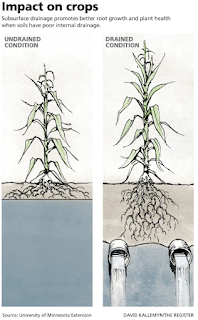My hope is that from reading the success that Polk County Conservation has experienced inspires others to get involved and make a change. As a Wildlife Biologist, it inspires me to see change actually happening via staff who have a passion for their job as well as adequate funding resources. In my current position, funding is often limited and purchase methods seem to be more cost prohibitive than productive. I understand some of this is going through the 'red tape', but I also look forward to advancing my career in the future to areas that have adequate funding.
As such, I wanted to provide resources for people who wanted to get involved with Polk County Conservation.
Volunteering
Polk County Conservation (PCC) has all sorts of opportunities for people to get involved. Prior to doing so, you must fill out a volunteer application. They also ask that everyone reads, signs, and adheres to the volunteer Code of Conduct. This is important to ensure that certain standards are met to allow all involved to have a positive, safe, and learning-conducive time.
PCC publishes what appears to be a quarterly Volunteer Calendar, describing opportunities you have to get involved so you can plan well ahead of time. Two of the things on their current calendar - invasive species removal and seed harvest are components of ecological restoration that I have become passionate about. I am working extensively to remove invasive species at my current place of work as well as implement a grassland restoration project to restore some of Virginia's native prairies back to their former glory. These are two programs with Polk County I would definitely encourage anyone who is interested to get involved with. Many, MANY hands are needed for both of these assignments, your efforts will always be needed.
PCC also has public volunteers days (2x/month) where the public can come out and make a difference on one of the other projects PCC has going on. These projects range from trash pick up to trail maintenance, waterway cleanup and more! They also offer Private conservation events - I'm curious myself on what this entails!
Adopt a Park - PCC has several parks available that volunteers can 'adopt', conducting work day events throughout the year as needed. Bird boxes, clean-up events, trail maintenance and other beautification projects are among the list of many things you can get involved with. For more info, see their Adopt-a-park Flyer!
There are plenty of volunteer opportunities with PCC to do nearly any conservation related project you can think of. They even seem to be open to creative projects as well, so feel free to suggest your own. It seems as though they have tons of work, so don't be discouraged if your idea isn't utilized just yet. As conservation professionals, they too have goals they would like to meet annually related to their personal and professional goals.
They also have an 'Events' component with their program. These seem to be more geared towards fun, outdoors events rather than projects. While projects have their place, sometimes we just need to connect with the outdoors and just be. They have several hiking events, with one that looks enticing just because of it's name and photo associated with it: Hike and Hot Cococa. For more information on Events, please go to their Events page. Events due require registration prior to attending. Likely this is due for planning purposes. Planning ahead of time will allow an adequate staff to volunteer ratio, allow staff to provide proper equipment for everyone, and to also ensure that too many people don't sign up for one task. While that seems slightly silly, there are many areas of need and spreading the wealth of volunteers is extremely beneficial to conservation professionals.
For those looking for less 'hands on' physical labor type volunteer opportunities, Jester Park is the place for you! There is a need for all sorts of volunteers, one is not greater than the other. Jester Park has volunteer opportunities to help greet visitors, provide information similar to that above with events and programs going on, and directing people to trails. For more information about Jester Park volunteer opportunities, please click here.
If you have questions/concerns/comments with any of the volunteer opportunities, the best contact would be to e-mail ConservationVolunteers@polkcountyiowa.gov. They will be able to respond to whatever inquiries you may bring.
I hope this provides anyone interested with resources to get them started on volunteering with Polk County Conservation. They are doing great things in the area and I hope to be a part of the volunteering someday myself!









































